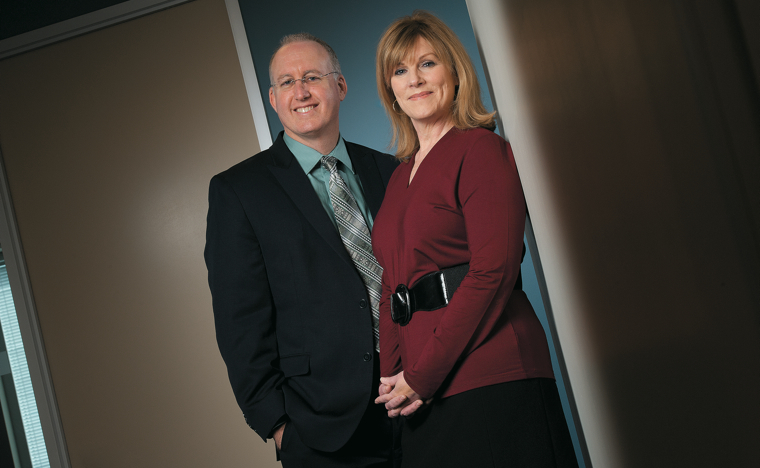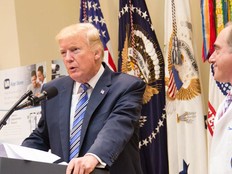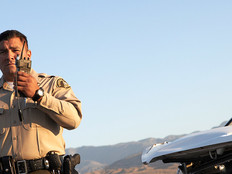Mobile Healthcare Is Solving Major Problems for Military Doctors and Nurses
The Army Medical Department takes great pride in its proactive role leading the research and development of mobile healthcare applications, also known as mHealth. As of early 2013, the Army’s Telemedicine and Advanced Technology Research Center (TATRC), within the Medical Research & Materiel Command at Fort Detrick, Md., had 15 research projects under way in its mHealth lab, addressing military health needs for garrison, theater and global health operations.
TATRC’s mHealth projects focus on pioneering applications for use by patients and healthcare providers. One of the largest mHealth projects is a joint research initiative with the University of Miami’s William Lehman Injury Research Center at Ryder Trauma Center to develop an application called MobileCare. Miami’s staff designed the user interface, learning content and programmed interfaces, while an IT team at the University of Central Florida assisted with mobile development. The MobileCare app focuses on getting healthcare information into the hands of healthcare providers via smartphone.
MobileCare addresses three important aspects of clinical care. First, it provides a mobile interface to enhance the documentation of clinical care using intuitive data entry techniques, including voice recognition. Second, it has an integrated mobile learning system that provides training, refreshers and point-of-care information to reduce errors and improve outcomes. Third, it incorporates telemedicine with two-way audio and video communication between different healthcare providers. Initially designed for the iOS and Android operating systems, the app’s future versions will also run on other smartphone platforms.
“What we’re trying to foster is healthcare as a mobile concept,” says Dr. Steve Steffensen, the former chief medical information officer at TATRC.
“Rather than sit down at a computer in an office, we want to deliver information to physicians at the point of need,” says Steffensen, who headed up Mobile-Care for several months and was recently appointed chief of the Office of Health Innovation, reporting to the Army surgeon general. “The future success of the Military Health System will depend on our ability to securely deliver relevant health information in a timely manner to those most affected by its meaning. Patients should be the prime recipients of this information, and mobile health is the leading candidate for delivery. MobileCare is an initial step in helping make this vision a reality within the Department of Defense.”

Credit: Welton Doby III
Carl Schulman of the William Lehman Injury Research Center and Cynthia Barrigan of the Army’s Telemedicine and Advanced Technology Research Center say MobileCare can help medical professionals offer better care to patients.
Integrated Features
Cynthia Barrigan, registered nurse, the MobileCare program manager at TATRC, says MobileCare integrates three key elements a provider needs to optimize job performance: an interface to an inpatient electronic medical record system, access to a variety of mobile learning content and a telemedicine capability to enable collaboration with other clinical team members.
“By combining those three features into one intuitive smartphone application, MobileCare delivers a unique capability to users,” Barrigan explains.
The number of ongoing research projects conducted by the Army’s Telemedicine and Advanced Technology Research Center, or TATRC
SOURCE: TATRC
“The seamless integration of patient information with training resources enables doctors and nurses to provide the best possible care, by allowing them to assess needs and immediately look up the latest research on relevant medical topics, or review the latest surgical techniques by viewing a video of a procedural animation,” Barrigan says.
MobileCare is being piloted by nurses and physicians at the Ryder Trauma Center. The system receives information from the hospital’s Cerner electronic medical record system, as well as the lab system, and is being used for doctors to document clinical notes, Barrigan says. Doctors taking part in the pilot at Ryder can create documentation on a smartphone, including admission notes, procedure notes and billable physician progress notes.
“Keep in mind that our military health information systems are computer-based and internal to hospitals,” Barrigan says. “A tool like MobileCare could offer our health providers more options for accessing and retrieving information, whether they are inside the hospital, at home or in transit.”
Although using the MobileCare functionality in the field is certainly a goal, Barrigan says the team has to test the prototype application to see how MobileCare can be adapted for use by the Military Health System.
Carl Schulman, a trauma and burn surgeon, director of the William Lehman Injury Research Center and one of the lead researchers on MobileCare, says security, device management and adequate bandwidth are obstacles the team must overcome in order to fully deploy MobileCare.
Innovations for mHealth will continue to be a major focus for TATRC in 2013, says Lt. Col. Deydre Teyhen, the center’s acting director.









